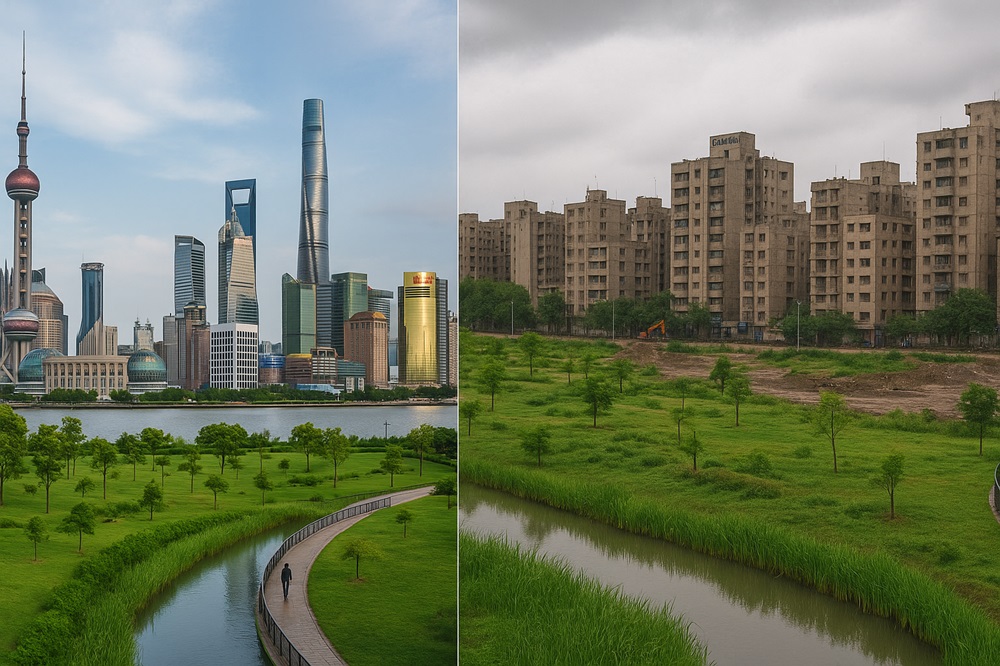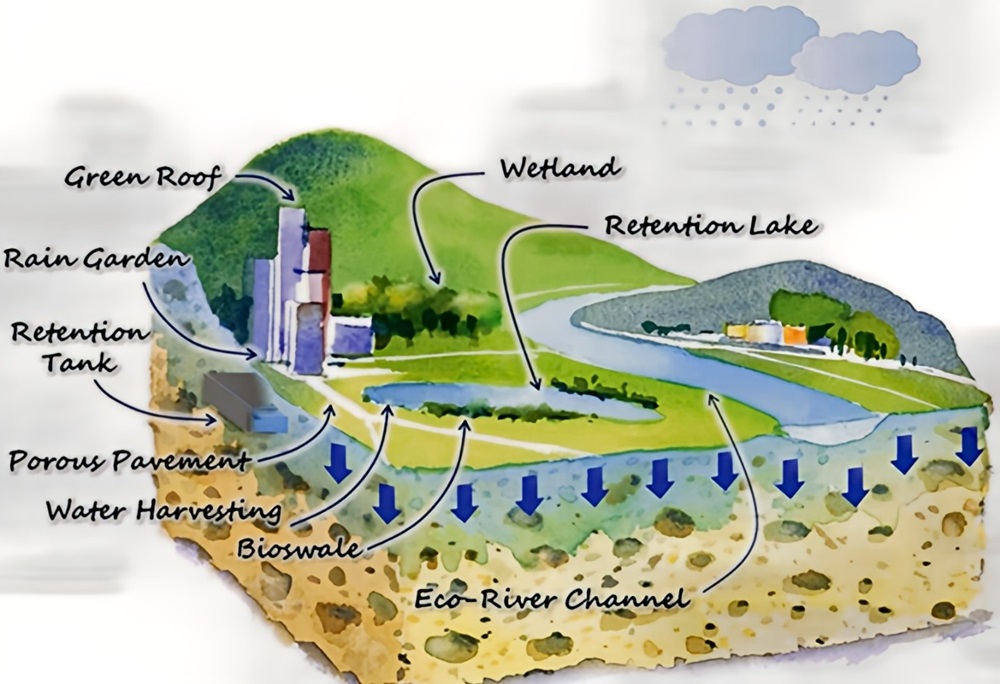Written by: Ayesha Shoukat
Posted on: June 17, 2025 |  | 中文
| 中文
Qunli Stormwater Park, China, a successful example of the Sponge City model.
Every monsoon season in Karachi is like a time bomb waiting to be exploded as the city struggles to cope with climate change as well as the rapid urbanization. Streets turn into rivers, areas become islands and life-giving infrastructure collapses under the barrage of never-ending rain. Under this chaos, the urban planners and environmentalists are seeking answers to this disorder towards the east, China Sponge City model. Can Pakistan’s largest city, plagued by complex governance, scarce resources and disorganized development, adopt a nature-based approach to flood resilience?
The China’s Sponge City initiative was introduced in 2015 with the aim to change the urban areas into permeable and water-absorbing ecosystems. The concept is very simple but a true revolution: imitate natural hydrology by including green roofs, porous pavements, rain gardens and wetlands to limit surface runoff as well as to curtail floods.
Many Chinese cities have made immense progress in this regard, particularly Shanghai, Wuhan and Kunshan. Shanghai established stormwater parks that also serve recreational purposes, while Kunshan invested heavily in permeable infrastructure, reducing floods by a whopping 90%. Even dense megacities have incorporated these elements into their urban fabric, restoring green cover, managing stormwater locally and increasing biodiversity.
However, the success in Sponge Model in China has been somewhat mixed. Despite huge investment, Zhengzhou, a pilot sponge city, was flooded heavily in 2021. This underscored a critical lesson: sponge infrastructure should not be devoid of other complementary strategies on water management such as emergency preparedness, strong sewage systems and climate resilient designs.
It is worth mentioning that Karachi’s challenges reflect those of pre-Sponge cities in China. Over the past three decades, the urbanization has quickly gorged down green spaces, blocked the natural flow of drains and replaced permeable land with concrete. Throughout the city, illegal settlements near nullahs, clogged drains and weak waste management have increased the vulnerability of the city to flash floods.
Such systemic loopholes in Karachi were exposed by the devastating monsoon seasons in 2020 and 2022. Entire districts were flooded, crippling life and business for several days. Given climate model forecasts predicting more intense rainfall in the future, Karachi's vulnerability is no longer a seasonal fiasco, it is a public safety and environmental catastrophe.
Although, the Sponge City model has proffered a ray of hope, the idea of implementing China’s blueprint into Karachi is not so simple. The city has many structural and socio-economic barriers:
The populous urban growth in Karachi is characterized by a severe lack of room for large areas of green infrastructure. While China’s planned developments provide more opportunities for large-scale wetlands or stormwater parks, Karachi’s informal settlements and commercial zones provide very little of such opportunities. Nevertheless, the small-scale solutions, the pocket parks, the green roofs and vertical gardens, could still matter.
China’s success reflected top-down planning, policy coherence and a huge state investment. On the other hand, Karachi is plagued by division in jurisdictions among municipal, provincial and federal authorities. Institutions such as the Karachi Water & Sewerage Board are faced by cash strapped financial strains, which make long term investments in green infrastructure even worse.

A visual comparison of Shanghai and Karachi highlights how Karachi can adopt localized, nature-based Sponge City principles to build flood resilience.
Community involvement is needed to flourish nature-based solutions. In cities such as Hong Kong, green walls and roof gardens caught on with the help of incentive schemes and public awareness campaigns. In Karachi, where public trust in governance is low and awareness of environmental solutions is limited, community engagement will be challenging.
Karachi’s drainage systems are often neglected, with nullahs clogged by garbage and silt. Measures associated with the Sponge City model, such as rain gardens and permeable pavements, require regular maintenance to remain effective. Without a broader shift, a cultural and institutional commitment to urban upkeep, new interventions risk falling into the same cycle of neglect.
Karachi does not have to reinvent the wheel in spite of all the challenges. Globally, examples like Riyadh’s Wadi Hanifa restoration demonstrate how degraded watercourses can be revitalized by combining natural engineering, sewage treatment and native vegetation. A gradual outline and a local approach may have the biggest effect on Karachi:
The Sponge City model is not a uniform solution. But it is a very strong frame to reimagine cities as living, breathing ecosystems. Karachi’s existing flood strategy, which is characterized by unplanned cleanup initiatives, emergency responses and so on, is unable to withstand the warming planet. Instead, the city needs to shift away from a purely economic perspective toward a more systemic, ecological understanding that links green infrastructure with urban planning. This requires political commitment, public-private partnerships and continuous community engagement. It also means accepting the fact that, while concrete alone cannot save a city from the climate crisis, nature must be part of the solution.

Schematic drawing of the “Sponge City” concept. (Source, Drainage Services Department, Sustainability Report 2016–2017)
Karachi may never resemble Shanghai or Kunshan but it can adopt the principles of the Sponge City as applied in those Chinese cities. Bringing together localized and community-led interventions with intelligent policy reform and infrastructural investment, the city can start to become a more flood-resilient city.
We should act now. Each year of inaction brings us one monsoon season closer to tipping from inconvenience into catastrophe. The issue isn’t whether Karachi can pay their way towards being a sponge city, it’s a case of whether it can afford not to.
You may also like: